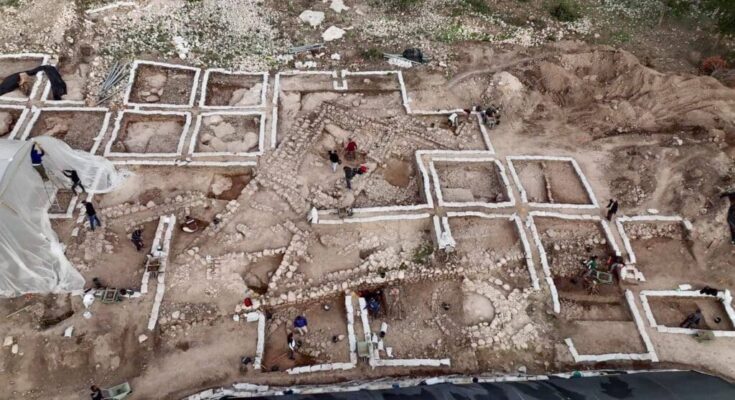
Archaeologists working on a site planned for a new industrial area have uncovered a bronze age temple dating back 5,000 years. This ancient discovery, found near Beit Shemesh, Israel, includes what may be the oldest public building found in the country, according to the Antiquities Authority.
At the site, known as Hurvat Husham, researchers uncovered a large, well-preserved building. The building’s purpose remains uncertain, but experts believe it could have served as a temple or an important place for the community.
The excavation leaders, Ariel Shatil, Maayan Hamed, and Danny Benayoun, explained that the building’s size, thick walls, and benches suggest it was more than just a regular structure. They described it as an exceptional find, likely used for public gatherings or ceremonies.
Researchers noted that ancient public buildings from this period are extremely rare in Israel, especially from such an early era. By studying the few other known structures, they concluded that this might be one of the oldest temples discovered in the Judean Lowlands.
40 intact pottery vessels found inside the temple

Inside the building, they found around 40 pottery vessels, many of them small and possibly intended for special or ceremonial purposes rather than daily use. The pottery seemed to have been left exactly as it was before the people abandoned the site.
The excavation leaders found signs of burning, with pottery scattered and some pieces stacked on top of each other. This suggests the site may have been left suddenly, possibly due to an unexpected event. Researchers plan to use laboratory tests on the pottery to find out what they once held—maybe water, oils, or other unique substances.
At the Hurvat Husham site, archaeologists have uncovered two of Israel’s oldest pottery kilns, which point to the settlement’s active role in early pottery production.
This highlights the early stages of standardized craftmaking—an important indicator of social organization and city development during the Early Bronze Age. Antiquities Authority specialists believe that this find could shed light on local trade systems and economic practices in the ancient Judean Lowlands.
The site also features a remarkable arrangement of large, upright stones set in rows, which appears to predate the construction of the main building.
Dr. Yitzhak Paz, an expert on the Early Bronze Age, noted that these stones likely marked an open area used for community rituals before the community started building enclosed spaces.
“This development from open to enclosed cultic spaces reflects a shift toward more regulated and hierarchical social structures. It’s an early example of urban planning in Israel and a sign of the emerging socio-political complexity in the region,” said Paz.



